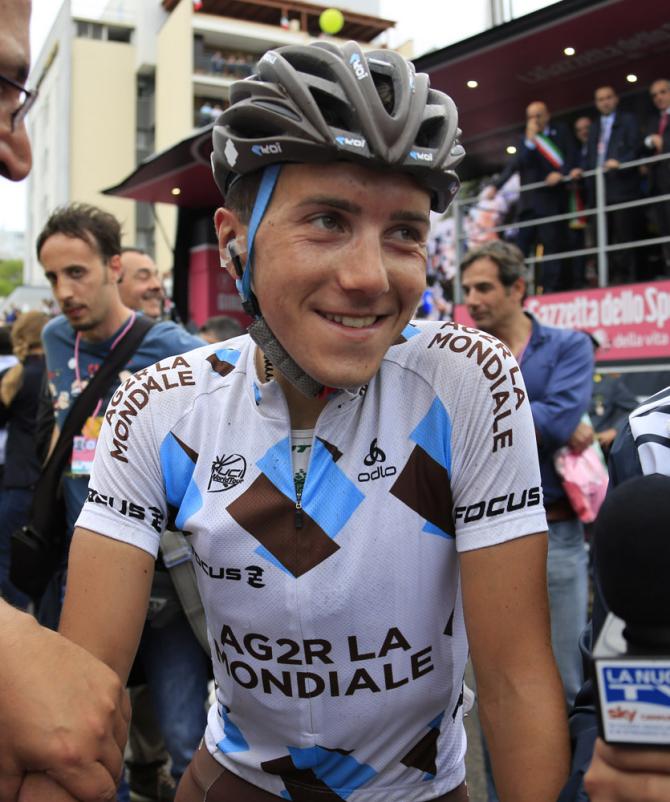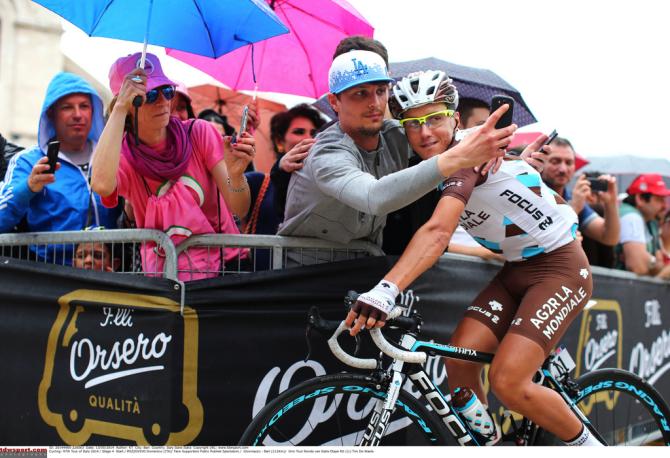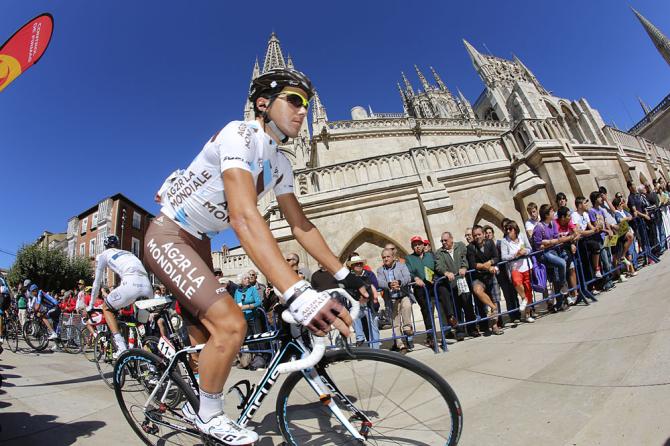A homecoming for Pozzovivo as Giro d’Italia visits Basilicata
Viggiano finale will not split overall contenders says Italian



The writer and painter Carlo Levi’s account of life as a political exile in Basilicata was titled “Christ Stopped at Eboli,” echoing the local lament that the southern region had been bypassed by history and overlooked by the rest of Italy.
On Wednesday, Basilicata is, for one day at least, at the epicentre of the Giro d’Italia, playing host to a testing uphill finish in the village of Viggiano.
After last year’s striking finale in Matera, where John Degenkolb won the sprint, it’s the second time in as many editions that the corsa rosa has visited a region of haunting beauty that is also one of Italy’s poorest and most isolated. For Domenico Pozzovivo (Ag2r-La Mondiale), stage 5 will be a particularly moving experience. The race passes through his hometown of Montalbano Jonico, a hilltop village inland from the Ionian Sea, the “instep” of Italy’s boot.
“It’s important for the region that the race is coming through because it’s not something that happens often and it’s even more important for me personally because it passes right through my home in Montalbano Jonico,” Pozzovivo told Cyclingnews. “It’s an historic day because it’s the first time the Giro has ever gone through the village, and we’ve got the intermediate sprint too.”
Basilicata’s status on the fringes of Italian economic life is reflected in its cycling scene. By the age of 17, Pozzovivo had exhausted his possibilities in southern Italy and was forced to make the long, lonesome trek north in order to pursue a career in the sport, arriving first in Piedmont and later in Tuscany and Lombardy, before finally settling in Castelfranco Veneto while riding for amateur outfit Zalf-Fior.
“There are races in Basilicata when you’re under-12 or under-14 but there are fewer and fewer as you get older and eventually you have to move to the centre or north of Italy if you want to continue racing,” he said. “And that’s not easy for a young rider, moving so far away from your friends and family. I’ve always hoped that the situation would change but it’s hard to see that happening.”
Pozzovivo continued to live in the Veneto for his first three years as a professional, before returning home to Basilicata, although he acknowledged that simply travelling to races is a complicated endeavour. “I always have to go by plane and the airports aren’t so close – either Bari or Naples, so it can be a bit difficult,” he said.
Get The Leadout Newsletter
The latest race content, interviews, features, reviews and expert buying guides, direct to your inbox!
Inadvertently, there is a certain symbolism that the Giro’s visit to Basilicata culminates in Viggiano. The nearby Val d’Agri is the site of mainland Western Europe’s largest oil field, yet in spite of that precious resource, unemployment remains high in the region and many young people – like Pozzovivo was – are forced to move northwards in search of work.
“It’s very important for the region to have a stage like this because it shows off that we have natural riches like the nature and landscape, but also natural resources like oil,” Pozzovivo said. “The problem is that you need to know how to take advantage of those resources to create work for young people in Basilicata, because as things are at the moment, all of the young people are leaving my region.
“I think it’s a political problem – these resources should be used and [the proceeds should be] distributed to help those who want to create new things in the region.”
Viggiano finale
On Wednesday, Pozzovivo’s focus will be on the cut and thrust of the Giro d’Italia rather than the economic and social hardships of his home region. The finish line in Viggiano is atop a category 4 climb (1km at an average gradient of 7%), which is climbed twice in the finale with a testing descent in between.
It is the first hilltop finish of the Giro, but while Pozzovivo expects the first ascent to Viggiano to whittle down the peloton, he believes the primary contenders for overall honours will all finish together.
“I think guys like [Diego] Ulissi will be up there for the stage win and for us GC riders, the aim is to be there or thereabouts,” he said. “We need to avoid splits and avoid getting left behind, but it’s hard to envisage that there will be any real gaps between us."
“I know the climb well because it’s not very far from where I live. It’s a very rideable climb on a wide road, so I think you’ll have a group of around 20 or 30 riders sprinting it out at the finish. Seeing as we do the climb twice, I think the finishing circuit will force a little selection.”
Pozzovivo starts his home stage in 73rd place overall, 53 seconds behind Rigoberto Uran (Omega Pharma-QuickStep) and 51 seconds down on Cadel Evans (BMC), but just three seconds behind Nairo Quintana (Movistar) and 35 seconds ahead of Joaquim Rodriguez (Katusha).
The diminutive climber’s target for the Giro is a top five finish in Trieste, and he declared himself pleased with his management of the troika of Irish stages that opened the race.
“It’s been very positive. We did the best team time trial we could and I didn’t lose much time,” Pozzovivo said. “In the stages afterwards I avoided risk and falls, so I think the report is good so far. Now the real Giro starts.”

Barry Ryan was Head of Features at Cyclingnews. He has covered professional cycling since 2010, reporting from the Tour de France, Giro d’Italia and events from Argentina to Japan. His writing has appeared in The Independent, Procycling and Cycling Plus. He is the author of The Ascent: Sean Kelly, Stephen Roche and the Rise of Irish Cycling’s Golden Generation, published by Gill Books.